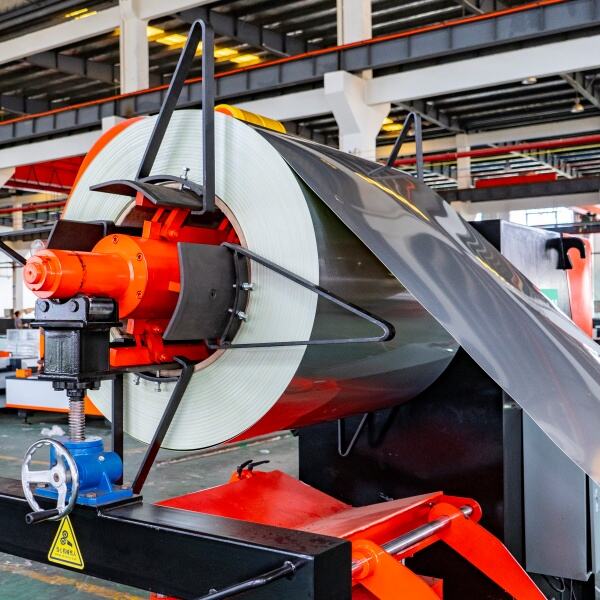재료별 정밀 가공을 위한 레이저 출력 및 절단 속도 최적화
고품질 결과를 얻기 위해서는 레이저 출력과 절단 속도를 적절히 조절하는 것이 매우 중요합니다. 이러한 최적화를 통해 깨끗한 절단면을 확보하고 에너지 낭비와 재료 왜곡을 최소화할 수 있습니다.
다양한 재료에 맞는 적절한 레이저 출력 선택
플라스틱이나 필름과 같은 얇은 재료를 가공할 때는 10W에서 100W 사이의 출력을 유지하는 것이 좋으며, 너무 높으면 소재가 타버릴 수 있습니다. 그러나 스테인리스강이나 알루미늄의 경우 이야기가 달라지며, 적절한 결과를 얻기 위해 500W에서 최대 6,000W에 이르는 훨씬 강력한 장비가 필요합니다. 절단 속도를 예로 들어보면, 2025년 업계 최신 자료에 따르면, 대형 40kW 레이저 장비는 20mm 두께의 강판을 절단할 때 소형 15kW 장비보다 약 6배 더 빠릅니다. 재료 두께만 중요한 것은 아닙니다. 구리와 황동은 절단 부위의 열을 매우 빠르게 전도하기 때문에 일반 강철보다 약 15~20% 더 높은 출력이 필요합니다. 효율적인 제조를 중시하는 모든 사람에게 이러한 점들을 정확히 이해하고 적용하는 것이 매우 중요합니다.
재료 두께 및 종류에 따라 절단 속도 조정하기
재료가 두꺼워질수록 절단 속도가 빨라지는 경향이 감소합니다. 표준 6kW 레이저 절단기를 예로 들면, 1mm 두께의 탄소강은 분당 약 33미터의 속도로 처리할 수 있지만, 20mm 두께의 판재를 가공할 경우 속도는 단지 12m/분으로 급격히 떨어집니다. 알루미늄과 같은 반사성 금속을 가공하는 것은 더욱 까다롭습니다. 이러한 재료는 레이저 에너지를 매우 많이 산란시키기 때문에 강철보다 약 20% 정도 느린 속도가 필요합니다. 다행스럽게도 동적 출력 제어 기능을 갖춘 최신 시스템들이 상황을 변화시키고 있습니다. 이러한 고급 장비는 작동 중에 실시간으로 속도를 조정하여 두께가 다양한 부분을 가진 부품을 처리할 때 전체 가공 시간을 약 18% 줄일 수 있습니다.
출력과 속도의 균형을 맞추어 컷팅 폭과 열영향부 영역을 줄이기
절단 작업 중 과도한 전력을 가하면 실제로 절단 폭이 넓어지는데, 이를 '커프(kerf)'라고 하며 최대 25%까지 증가할 수 있습니다. 반면에 기계의 이동 속도가 너무 느리면 그 여분의 열이 축적되어 얇은 금속 시트를 휘게 만들기 시작합니다. 예를 들어 3mm 두께의 스테인리스강을 살펴보면, 약 2500와트의 레이저 출력으로 약 분당 4미터의 이송 속도를 유지하면 약 0.15mm 정도의 매우 정밀한 절단 폭을 얻을 수 있습니다. 이는 일반적으로 대부분의 사용자가 기기를 설정하는 것보다 약 절반 정도 더 좁은 수치입니다. 이렇게 정확하게 설정하는 것이 중요한 이유는, 올바르게 수행했을 때 열 영향 부위를 약 30% 정도 줄일 수 있기 때문입니다. 이는 곧 절단 후에도 금속이 더 강한 강도를 유지하고 원래의 물성을 그대로 보존한다는 의미이며, 제조업체들이 원하는 바로 그 결과입니다.
사례 연구: 동적 전력 제어를 통한 스테인리스강 절단 품질 향상
한 제조업체가 센서 기반 전력 변조를 도입하여 8mm 스테인리스강에서 잔재 생성을 72% 줄였다. 이 시스템은 열 피드백에 따라 0.8초마다 출력을 조정하여 불균일한 표면에서도 최적의 에너지 밀도를 유지한다. 이를 통해 모서리 직각 허용오차가 ±0.2mm에서 ±0.05mm로 개선되어 항공우주 등급 사양을 충족시켰다.
깨끗하고 잔재 없는 절단을 위한 보조 가스 선택 및 제어
보조 가스 종류를 재료에 맞추기 — 탄소강에는 산소, 스테인리스강에는 질소 사용
파이버 레이저 절단에서 최상의 결과를 얻으려면 작업 중인 재료에 맞는 적절한 어시스트 가스를 선택하는 것이 중요합니다. 탄소강을 다룰 때는 산소가 매우 효과적인데, 이는 절단 과정에서 열을 발생시키는 반응을 유도하기 때문입니다. 이 방식은 두께가 최소 6mm 이상인 판재의 경우 절단 속도를 약 30%까지 향상시킬 수 있지만, 절단면 가장자리에 일부 산화가 발생할 수 있습니다. 스테인리스강의 경우는 상황이 다릅니다. 산화를 완전히 방지할 수 있기 때문에 질소가 가장 일반적으로 사용되는 가스입니다. 이렇게 하면 금속의 부식 저항성도 유지되므로 많은 응용 분야에서 중요합니다. 대부분의 산업 표준에서는 순도가 99.995% 이상인 질소 사용을 권장하며, 제조업체들은 일반적으로 공정 매개변수에 이를 명시합니다.
가스 압력과 유량을 최적화하여 절단면 품질 향상
가스 파라미터의 균형 조절을 통해 돌출물(dross)을 줄이고 운영 비용을 최소화:
- 양질의 스테인리스강 (1–3 mm) : 14–18바(bar)의 질소 압력으로 버(burr) 없는 절단 달성
-
탄소강 (8–12 mm) : 1.2–1.5바의 산소 유량이 슬래그 제거를 최적화함
과도한 압력(>20바)은 난류 가스 흐름을 발생시켜 얇은 재료에서 커프 폭이 15–20% 증가함
파이버 레이저 절단기 적용 시 질소와 산소의 비교 이점
산소를 사용하면 구조용 강재 부품의 가공 시간을 단축할 수 있지만, 절단면에 페인트가 있는 경우 일반적으로 절단 후 연마 작업이 필요합니다. 스테인리스강은 질소를 사용하는 것이 더 나은 결과를 얻을 수 있는데, 이는 용접을 바로 진행할 수 있는 깨끗한 가장자리를 만들어 내어 추가 작업 없이도 완성된 상태로 만들기 때문입니다. 다만 단점은 가스 비용이 크게 증가한다는 점으로, 산소 시스템보다 약 40~60% 더 비싸게 듭니다. 그러나 업계 보고서들은 이러한 가스들의 최적 활용 방안을 분석하는 과정에서 흥미로운 사실을 보여줍니다. 질소가 비싸긴 하지만, 고품질 마감 처리를 할 때 기업들은 실제로 약 18% 정도의 투자 수익률 증가를 경험하게 되는데, 이는 후속 공정에서 발생하는 추가 작업 비용을 절약할 수 있기 때문에 타당한 결과입니다.
새로운 트렌드: 실시간 압력 조절이 가능한 스마트 가스 공급 시스템
첨단 센서가 천공 및 윤곽 가공 단계에서 자동으로 가스 파라미터를 조정합니다. 한 자동차 부품 공급업체는 적응형 유량 제어를 사용해 스테인리스 배기 부품의 엣지 일관성을 ±0.05mm로 유지하면서도 질소 낭비를 22% 줄였습니다. 이러한 시스템은 노즐 마모와 재료의 불균일성을 보상해주므로 다양한 제품을 혼합 생산하는 환경에서 특히 중요합니다.
정확한 초점 설정과 빔 정렬로 최대 정밀도 달성
집중된 빔 강도를 위한 초점 거리 설정 및 렌즈 선택
재료 두께에 따라 렌즈 선택이 결정됩니다. 5인치 렌즈는 얇은 시트(<5mm)에 에너지를 집중시키며, 7.5인치 렌즈는 20mm 이상 두꺼운 판재에 열을 고르게 분산시킵니다. ±0.1mm의 초점 허용오차는 컷팅 폭(Kerf width)의 변동을 12% 감소시킵니다(산업 표준 2023). 주요 요소:
- 초점 위치 조정: 알루미늄과 같은 반사성 금속의 경우 +0.5mm
- 빔 콜리메이션: 발산각을 <1.2mrad로 줄여 안정적인 에너지 밀도 유지
- 반사 방지 코팅: 고출력 파이버 레이저 절단기 작동 시 렌즈 수명을 40% 향상시킴
초점 위치를 정밀 조정하여 경사각을 최소화하고 직각 절단 보장
동적 Z축 보정은 장시간 절단 중 열렌징 효과를 상쇄합니다. 6mm 스테인리스강의 경우, 표면 위로 초점을 0.2mm 높이면 경사각을 1.5°에서 0.3°로 감소시킵니다. 2023년 연구에 따르면, 레이저 삼각측량 피드백을 사용하는 자동 초점 시스템은 8시간 생산 주기 동안 ±0.05mm의 위치 정확도를 유지합니다.
일관된 직각성을 위해 레이저 빔 정렬 교정
0.02° 미만의 거울 정렬 공차는 다중킬로와트급 파이버 레이저에서 빔 이탈을 방지합니다. 정렬 아이리스와 빔 프로파일러를 이용한 주간 점검은 월간 절차 대비 각도 편차를 75% 줄입니다. 다축 정렬 프로토콜은 다음을 수정합니다:
| 매개변수 | 목표 값 | 절단 품질에 미치는 영향 |
|---|---|---|
| 빔 중심 맞춤 | 0.1mm 이하 변동 | 가장자리 줄무늬의 95% 제거 |
| 노즐 동심도 | 0.05mm 허용 오차 | 가스 난류를 40% 감소시킴 |
고정 초점 대 동적 초점: 고속 작동 시 성능 평가
동적 초점 헤드는 3D 윤곽 가공 테스트에서 절단 속도에서 고정 시스템보다 15% 우수했으며, 모서리 직각도를 0.5° 이하로 유지함(Laser Processing Consortium 2024). 하이브리드 시스템은 현재 압력 센서와 정전식 높이 추적 기술을 사용하여 초점을 초당 300회 조정하는데, 휘어진 시트 가공 시 매우 중요함.
재료 준비 및 유지 관리를 통해 일관된 절단 품질 보장
재료 준비: 절단 전 오일, 산화물 및 코팅 제거
윤활제, 녹, 아연 코팅과 같은 오염 물질이 있으면 절단 작업 중 레이저 빔의 흡수를 방해하는 경향이 있습니다. 이로 인해 절단 불량이나 원치 않는 드로스 형성과 같은 문제가 발생합니다. 표면을 제대로 세척하면 레이저에서 일관된 에너지 전달을 얻을 수 있어 초기 절단 후 필요한 작업이 줄어듭니다. 예를 들어 알루미늄 시트의 경우, 오일을 제거한 알루미늄 시트는 아무런 처리도 하지 않은 표면에서 일반적으로 나타나는 거친 가장자리 문제보다 약 40% 더 적습니다. 세척 방법은 작업하는 재료에 따라 달라야 합니다. 화학 용제는 오일 잔여물에 가장 효과적이며, 샌딩과 같은 기계적 방법은 단단한 산화층을 효과적으로 처리합니다. 단, 재료마다 세척 방법이 다르므로 상황에 따라 시행착오가 필요할 수 있습니다.
입고되는 자재에 대한 표준화된 점검 체크리스트 도입
5단계 검증 프로세스 개발:
- 평탄도 허용오차 : ≤ 0.5 mm/m²로 초점 거리 변화 방지
- 표면 반사율 : 휴대용 분광광도계를 사용하여 측정
- 코팅 두께 : 초음파 두께측정기를 사용하여 균일성 확인
- 합금 인증 : 자재 데이터시트와 대조 확인
- 보관 조건 : 응결 방지를 위해 건조 보관 확인
일상 유지보수 절차: 렌즈 청소, 노즐 점검 및 냉각장치 관리
- 렌즈 유지보수 : 마모되지 않는 천과 광학 등급 알코올을 사용하여 가동 4시간마다 보호 창을 청소하십시오
- 노즐 정렬 : 정렬 게이지를 사용하여 레이저 빔과의 동심도를 0.05mm로 유지하십시오
- 냉각장치 성능 : 냉각수 온도(20°C ±1°C) 및 유량(2L/분)을 모니터링하십시오
파이버 레이저 절단기 성능 유지 목적의 예방적 유지보수
제조사에서 권장하는 주기에 따라 소모품을 교체하십시오:
| 구성 요소 | 교체 주기 | 성능 영향 |
|---|---|---|
| 초점 렌즈 | 150절단시간 | 빔 분산 ≤ 5% |
| 노즐 팁 | 300시간 절단 | 가스 흐름 일관성 |
| 빔 전달 씰 | 매년 | 출력 손실 방지 |
모션 시스템과 빔 경로 정렬의 주기적 재교정을 통해 위치 정확도를 ±0.01mm 이내로 유지하여 대량 생산에서 복잡한 형상을 가공할 때 필수적인 정밀도를 보장합니다.
검증된 지표와 고급 도구를 사용하여 절단 품질 평가 및 모니터링
주요 절단 품질 지표: 드로스, 줄무늬(스트라이에이션), 타퍼, 버, 가장자리 직각도
파이버 레이저 절단기의 성능을 평가할 때 기술자들이 주로 확인하는 핵심 요소는 기본적으로 다섯 가지입니다. 우선 절단 후 남는 재부(돌출물) 두께가 0.15mm 미만인 경우, 일반적으로 가스 흐름이 적절히 조정되어 있다는 의미입니다. 하지만 절단면 가장자리에 이상한 줄무늬 패턴이 나타나는 경우, 이는 대개 절단 속도나 레이저 초점 위치 설정에 문제가 있음을 시사합니다. 다음으로 가장자리 직각도인데, 대부분의 장비는 편차가 약 0.5도를 초과할 경우 문제를 일으키기 시작하며, 이때 노즐 위치를 조정하거나 빔 경로 정렬 상태를 점검해야 합니다. 작년에 Fabrication Insights에서 발표한 일부 연구에 따르면 제조 공장에서 발생하는 생산 지연의 거의 5건 중 4건은 매우 단순한 원인에서 비롯됩니다. 두꺼운 스테인리스강 판재에서 1.2도를 초과하는 탑퍼 각도를 제대로 측정하지 못하는 작업자 실수로 인해 이후 공정에서 다양한 문제가 발생하는 것입니다.
| 메트릭 | 이상적 기준값 | 고장의 일반적인 원인 |
|---|---|---|
| 용융 잔류물 높이 | ≤0.1mm | 보조 가스 압력 저하 |
| 가변 두께 절단면 | ≤0.8° | 초점 거리 오류 |
| 버 너비 | ≤0.05 mm | 노즐 구멍 마모 |
| 표면 거칠기 | Ra ≤3.2 μm | 절단 속도 불안정 |
확대 장치와 표면 거칠기 측정법을 이용한 미세 결함 탐지
작업자는 200배 디지털 현미경과 비접촉식 프로파일로미터를 함께 사용하여 ≤5 μm의 측정 정확도를 달성한다. 이 이중 접근법을 통해 육안 검사에서 놓치기 쉬운 항공우주용 알루미늄 합금의 10–15 μm 미세 균열과 같은 미세한 불균일성을 탐지할 수 있다. 고반사율 구리의 경우, 편광 렌즈 어댑터를 사용하면 눈부심을 60% 감소시킬 수 있으며(Laser Systems Journal 2022), 이를 통해 열영향부(HAZ) 분석의 정밀도를 높일 수 있다.
생산 환경에서 속도와 정밀도 간의 상충 관계 해결
동적 파라미터 알고리즘은 이러한 충돌을 40% 감소시킨다(2023년 국제 첨단 제조학회지 기준). 실시간 시트 온도 센서와 적응형 전력 변조를 연계함으로써 제조업체는 정지된 설정 대비 22% 높은 처리량으로 분당 12m의 절단 속도에서도 ±0.05mm의 공차를 유지할 수 있다.
미래 지향: 실시간 품질 모니터링을 위한 AI 기반 영상 인식
합성곱 신경망을 적용한 비전 시스템은 현재 47가지 재료 등급 전반에 걸쳐 결함 분류 정확도 99.1%를 달성하고 있습니다. AI 기반 레이저 절단 분석의 글로벌 시장은 2030년까지 연평균 18.6% 성장할 전망입니다(Market Research Future). 엣지 컴퓨팅 모듈을 통해 클라우드 지연 없이 50ms 미만의 이상 감지를 가능하게 합니다.
자주 묻는 질문
다양한 재료를 절단할 때 이상적인 레이저 출력은 어떻게 결정합니까?
이상적인 레이저 출력은 재료의 두께와 열적 특성에 따라 결정됩니다. 플라스틱과 같은 얇은 재료는 낮은 출력(10W에서 100W)이 필요하지만, 스테인리스강 및 알루미늄과 같은 금속은 더 높은 출력(500W에서 6,000W)이 필요합니다.
레이저 절단 중 어시스트 가스를 사용하는 이유는 무엇이며, 어떻게 선택해야 합니까?
어시스트 가스는 슬러지 제거를 도와주고 절단면 품질을 개선합니다. 탄소강의 경우 절단 속도를 높이기 위해 산소를 사용하며, 스테인리스강의 경우 산화를 방지하고 내식성을 유지하기 위해 질소를 선호합니다.
레이저 절단에서 초점 거리(Focal length)의 역할은 무엇입니까?
초점 거리는 레이저 빔이 재료에 집중되는 정도를 결정합니다. 얇은 시트에는 짧은 렌즈를 사용하고, 두꺼운 판재에는 긴 렌즈를 사용하여 열을 분산시킵니다. 적절한 초점 거리는 일정한 절단 폭과 고품질 절단을 보장합니다.



